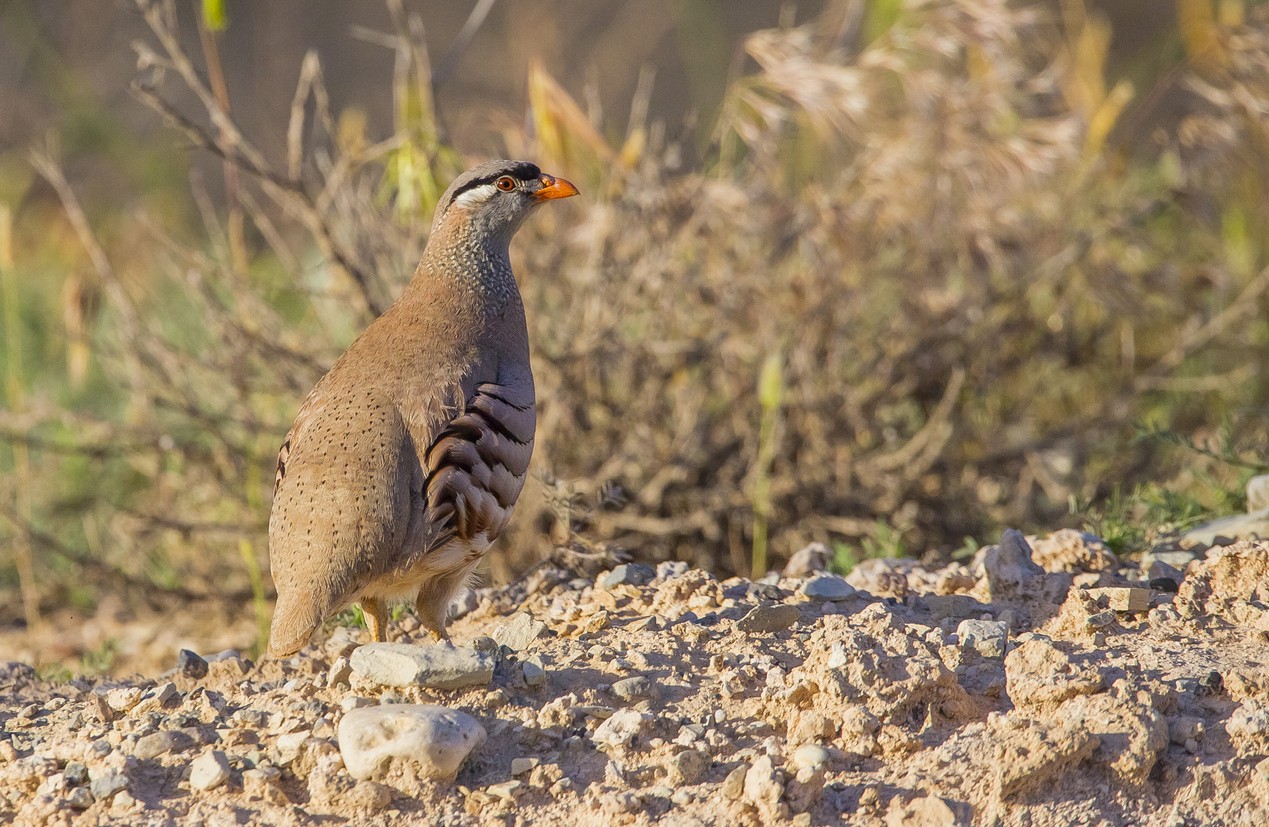See-see Partridge
A species of See-see and Sand Partridge Scientific name : Ammoperdix griseogularis Genus : See-see and Sand Partridge
See-see Partridge, A species of See-see and Sand Partridge
Botanical name: Ammoperdix griseogularis
Genus: See-see and Sand Partridge
Content
Description General Info

Description
The see-see partridge (Ammoperdix griseogularis) is a gamebird in the pheasant family Phasianidae of the order Galliformes, gallinaceous birds. This partridge has its main native range from southeast Turkey through Syria and Iraq east to Iran and Pakistan. It is closely related and similar to its counterpart in Egypt and Arabia, the sand partridge, Ammoperdix heyi. This 22–25 cm bird is a resident breeder in dry, open and often hilly country. It nests in a scantily lined ground scrape laying 8-16 eggs. The see-see partridge takes a wide variety of seeds and some insect food. See-see partridge is a rotund bird, mainly sandy-brown with wavy white and brown flank stripes. The male has a grey head with a black stripe through the eye and a white cheek patch. The neck sides are speckled with white. The head pattern is the best distinction from sand partridge. The female is a very washed-out version of the male, and is more difficult to distinguish from its relative due to the weak head pattern. Usually it is seen in pairs or, at the most, in flocks of two to four birds. But flocks of more than fifty birds have also been seen. When disturbed, see-see partridge prefers to run rather than fly, but if necessary it flies a short distance on rounded wings. The song is a whistled hwit-hwit-hwit. 
Size
25 cm
Nest Placement
Ground
Feeding Habits
See-see Partridge consumes shoots, leaves, seeds, and berries. It forages on the ground for insects like flies, ants, and beetles, showing a diverse diet. With unique adaptations, see-see Partridge is specialized to exploit various food resources in its habitat.
Habitat
The see-see Partridge primarily inhabits dry, stony foothills with sparse vegetation or bare ground. Preferring arid mountain foothills and desert landscapes, see-see Partridge tends to stay at elevations typically below 1000 meters. While they can occupy plateaus up to 2000 meters, these birds are found more commonly in warmer, lower areas compared to Alectoris chukar in overlapping territories. They avoid narrow ravines, craggy areas, or dense forests, showing a preference for flatter terrain, often in proximity to water sources which they visit frequently for drinking.
Dite type
Granivorous
General Info
Feeding Habits
Bird food type

